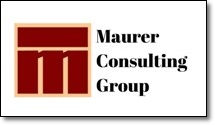Welcome to Part III of our ‘Designing Strategies’ Small Business Website Basics series. This four-part series covers these important topics as they relate to a small business website:
Part I: 10 Reasons a Small Business Website Is a Necessity, Not an Option
Part II: What Will a Small Business Website Cost Me?
Moving on to Part III of our series, we’ll talk about what a small business owner should consider when it comes time to develop the content for your site – which would be NOW if you don’t have one yet.
What To Include On a Small Business Website
Every small business website needs to be customized to include information specific to your firm. Your company needs be different enough to stand out from your competitors. If there are no differences, your business is just a commodity and you will have to operate based on price. How you do business, what you offer that no one else does, or what products or services only you can provide are all differentiators to set you apart. You want customers to deal with you because you are better and of more value to meet their needs. You want them to see value and be willing to pay more for it.
Colors, font styles, theme style and images for your website will be customized to get customers attention and make them understand how you are different and better. There are, however a number of things visitors to any small business website expect to find to help in their decision making process.
What Does a ‘Basic’ Small Business Website Contain?
Home or Landing Page
This critical piece of website is the first thing visitors will see when they link to your site. A Home page is the page most viewed by prospects, so make it count. It will likely be the first impression a customer will experience about your small business. A Home page tells visitors what your company does and establishes your company brand. It’s all about what you want people to see first, and its primary purpose is to sell you to potential customers. Make it count.
All About You and Your Firm
This important space shares information about the history of your company, the owner(s), key staff members and maybe even your Mission. This is your first opportunity to start building that all-important know-like- trust relationship with a prospect. Put a strong message in this space that will convince prospects that you are the perfect answer to their needs.
Products and Services
This section is where you tell prospects and customers how you can help them. What you put in this space will help visitors decide if you are the one they need, or if you are one among a few others that might be able to help solve their problem. Remember that customers want to know you can solve their problem, not how you will do it. They are looking for solutions, not processes when making decisions on who they will work with. If you have products for sale, you will need to be set up in an eCommerce fashion that provides specific information about each of your products. You will need a shopping cart and payment method built into your site.
Credibility for Your Firm
How do visitors to your site know for sure that you can do what you say? How do they know that you have experience in dealing with the kind of problem they face? What might convince visitors to know that your product will solve their problem? You have to prove it. How? Include information on your small business website that shows your experience, your education and kudos from other clients you worked with and were satisfied. This can be handled through a site capability that accommodates the ability to post reviews of a product, or testimonials from satisfied customers. Showing awards your firm has received will also help build credibility and authenticity.
Contact Information
People visiting your site need to know how to get in touch with you, so make it easy. Most sites include a Contact page. This page can include your telephone number, your address, and even a map showing them how to get to you. If you have specific days and times of operation, include those too. An email form can be included that allows for questions without feeling the pressure that sometimes comes with a phone call or face-to-face meeting. Additionally, you can add contact information on every page of your site. You phone number and address can appear on every page. If you have the staff, consider installing a Live Chat feature that lets prospects connect with someone when they have a question.
Subpages
Sometimes even small companies have just too much information to share on one page. You don’t want a long, long, scrolling page with nothing but text and a few pictures. Bor-ring! Visitors to your site will leave quickly and never come back if they find a long page full of nothing but text. The idea is to keep visitors on your site as long as possible, moving from ‘Look what I found on the Internet!’ to ‘I’m going to call these people right away and set up an appointment’ or ‘What a great product/service! I’m ordering mine today.’
I’ve audited a number of small business websites where this is the situation on their ‘About’ page. They want to share company history, their mission and vision, founders and key staff members. Instead of piling all of this information onto one long page of text that will bore the Dickens out of most prospects, subpages are used. Each of those topics can be handled as a separate subpage for easier reading. While an ‘About’ page can show up as a single tab on your Navigation bar, scrolling over it will show a drop down menu with all of the individual topics/sub-pages listed separately. Readers can easily go just to the topics that interest them.
Specialized Web Pages
Additional pages can be added to highlight unique products or services your company provides. In my case, I have a pages highlighting my public speaking and seminars, my ‘Designing Strategies’ Blog and ‘Designing Strategies’ e-Newsletter archives. My most recent new page is Resources for small business owners. This is where I use sub-pages for individual items. Others create pages for portfolios of their work, resources for their customers and FAQs. These additional pages provide an opportunity to present whatever additional information helps shine the spotlight on your small business.
Another type of specialized page you might need would be a landing page. Unless otherwise noted in your website settings, usually your landing page will be your site’s Home page. There are ways to change your settings to have people arrive on a Blog page, or one or more pages used for a marketing campaign.
Perhaps you are offering something free to attract customers. ‘Gifts’ might be an online webinar, a free introductory consultation, an e-book or a report about your area of expertise. A separate landing page can be useful to take interested parties to a page ‘hidden’ in your website where they can sign up, or download your ‘gift’ to them. To get your gift, they agree to give you their name and email address and receive email messages or newsletters from you. This is the process for building that important email list for future marketing efforts.
Calls to Action
Often, customers aren’t as adept as we’d like when it comes to moving closer to pushing a button that says ‘Buy Now!.’ We need to nudge them along a bit by including calls to action. These ‘nudges take prospects from Step 1 to Step 2 to Step 3 to finally doing what you want them to do.
If you want to build your email list, put an offer for a gift front and center to get them to sign up for your blog or newsletter. To sell a seminar, offer a report that touches on the topic of your seminar. Trying to sell a high priced package or program? Try offering a free webinar that covers only the tip of the iceberg on what that high priced package will contain.
Get to Work on Your Small Business Website
Take some time to visit other websites to get a feel for what they are sharing with customers. Be sure to check out your competitors’ sites to see what they are sharing with the public. Don’t restrict yourself to looking only at websites in your specific industry. Look at related industries as well. It can be surprising how many great ideas you can find when you step outside of your box.
There is much to know about what it takes to create a professional website for your small business. It takes far more than selecting a couple of font types and styles and a color scheme. And, it’s more than uploading a lot of images of your work. Those in service industries know what goes into getting a professional education. They understand working in a specific field to gain on-the-job experience. Often, passing an industry qualifying examination is also a requirement. A legal certificate or registration may be necessary for some fields of practice.
You are an expert in your field and can do what you do better than those without your credentials. Why would you not want an expert in the field that creates your most important marketing element creating your website? There are other things besides the look and content that make for a great website. It takes design, it takes creating the architecture to build the site, it takes marketing expertise.
It also takes knowledge about how to use SEO (search engine optimization) to get a high quality website. If you just build it, they won’t necessarily come, so don’t cut corners here. Invest in yourself and your company. Put your brand out in Cyberspace where customers can find you easily. Once you have prospects hooked, reel them in. Start them on the stepping stones that lead from being a casual prospect to becoming a real, live, paying customer. And, don’t forget, a customer who values your products and services will pay a premium for them.
Conclusion
I hope you are finding value in this series on the need for every small business to have a good website. Remember that your website is the hub, right smack in the center, of your overall marketing plan.
Coming soon – to a smartphone, tablet or computer monitor near you – will be Part IV of the Small Business Website Basics series. I don’t recommend that my clients take a DIY approach to such an important piece of their marketing plan. However, if you must, Part IV will cover some free, or inexpensive, website design and development software floating around cyberspace.






